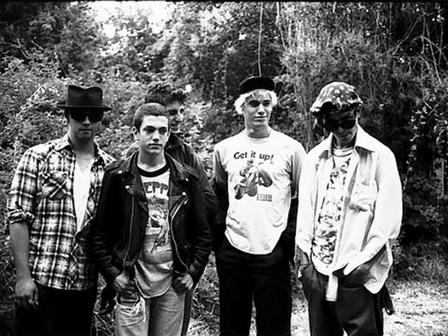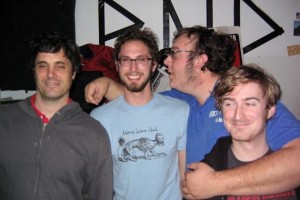

Along with creating visuals for the band, Michaels has also done logo work and cover art for Neurosis, Filth, and even Green Day, adorning many black leather jackets-as well as the actual skin of fans. Throughout the conversation with Michaels, it’s difficult for this writer to determine if his lack of thought about Op Ivy’s imprint on punk is out of humility or somewhat of a coping mechanism. I don't know what the future holds, but there are no plans for any get-together.”

It felt like there was a lot of closure in that.

I did some songs with Matt and Tim with Rancid at a show. “To be honest, I don't think about Op Ivy that much,” he admits, “but it can be a stepping stone to do other stuff. “I've been so busy doing other things that it hasn't really been on my radar. “If the offer's been on the table, I've never seen it,” Michaels answers when we ask if Coachella has prodded them to reunite. In an era of big-ticket reunions, Op Ivy are one of the few unicorns that haven’t been lured to the stage. Michaels continued making music and art with Big Rig, Common Rider and, most recently, Classics Of Love and while he has performed Op Ivy tracks and collaborated with Armstrong, he says a reunion is unlikely. The majority of the band pressed on in a new outfit called Downfall, before guitarist Tim Armstrong and bassist Matt Freeman formed Rancid. I think that dynamic, and even that conflict, was there, and it probably made the music better.” The opinions didn't always match up and eventually it did seem like a good idea to do different stuff. Like many youthful bands operating off a cocktail of dissent, hormones and a need to be heard, the band ended up flaming out in 1989, right as they were gaining momentum and national attention. It was fun to do something new in that context where everything felt a little burned out.” At that time period, the first wave of hardcore was really sort of tired-a lot of the best bands had broken up and there were a lot of bands that were doing something a little bit more generic.

Tim armstrong jesse michaels full#
It's kind of a fun challenge to go into a room full of grumpy hardcore people and try to win them over. We really brought a lot of the energy to the show. “At times it was sort of weird, but most of the time, people liked it. “There's certain times where people just wouldn't like us,” frontman Jesse Michaels explains. Like many great punk bands, Op Ivy’s influence outlived their existence, and the band’s lone LP Energy has long been considered a classic-an infectious, certified-Platinum mashup of genres that’s part of many “starter kits. Contextually, the Mighty Mighty Bosstones wouldn’t release their more ska-leaning debut album for another two years. In just a few years of existence, Operation Ivy not only left a lasting impression on the punk scene, but also opened up a lane for the ska-steeped punk bands that would dominate the radio in the mid-’90s. Read more: Green Day producing ‘Turn It Around: The Story of East Bay Punk’ documentaryĪnd then there’s the outlier of outliers, a modest band formed in 1987 by four Bay Area boys playing a mix of ska, punk and hardcore. Church, Neurosis and Fifteen, among others, they left a colorful story behind that continues to inspire. Sure, Samiam and Jawbreaker didn’t fulfill the sales projections the majors expected, but, along with compatriots Filth, Crimpshrine, J. The topic of a recently released documentary, Turn It Around: The Story Of East Bay Punk, Gilman famously launched Green Day and popular punk into the cultural lexicon, sparking a Nirvana 2.0-interest in independent music and the Bay Area.


 0 kommentar(er)
0 kommentar(er)
